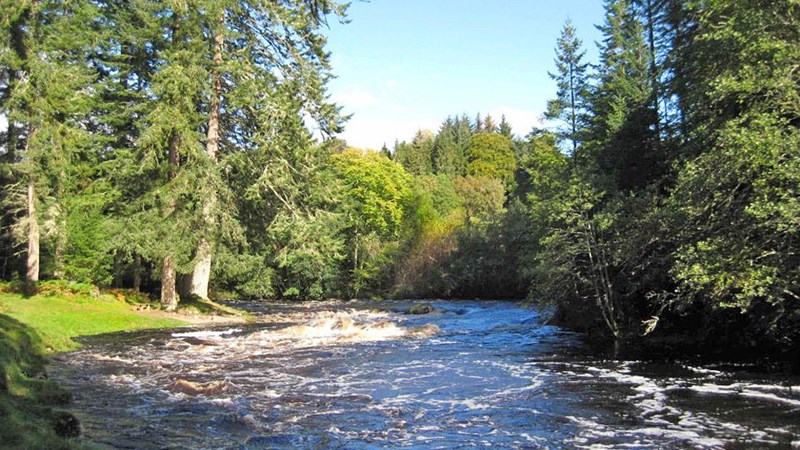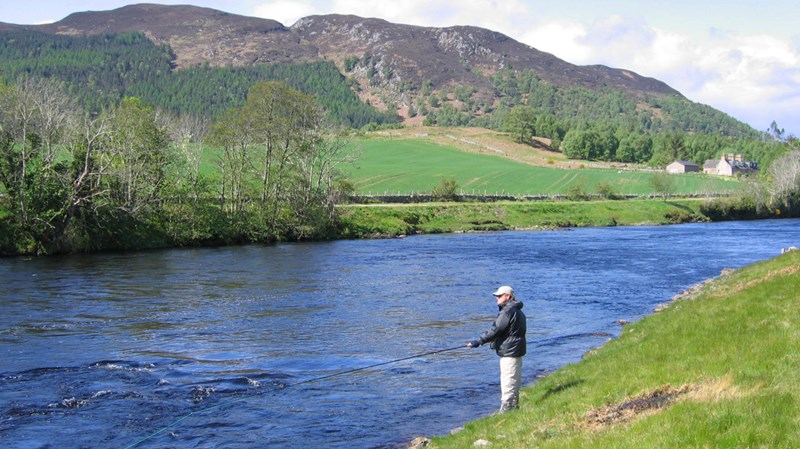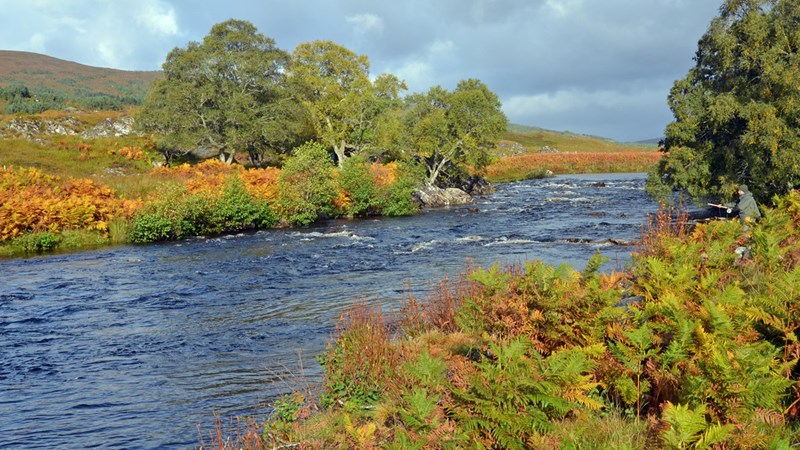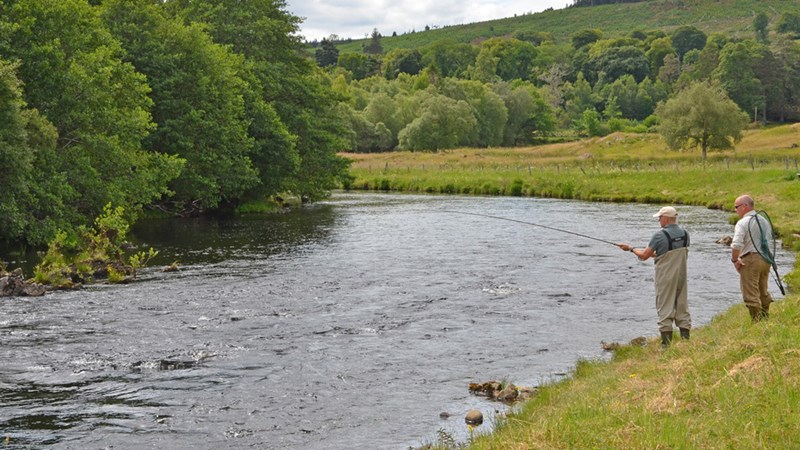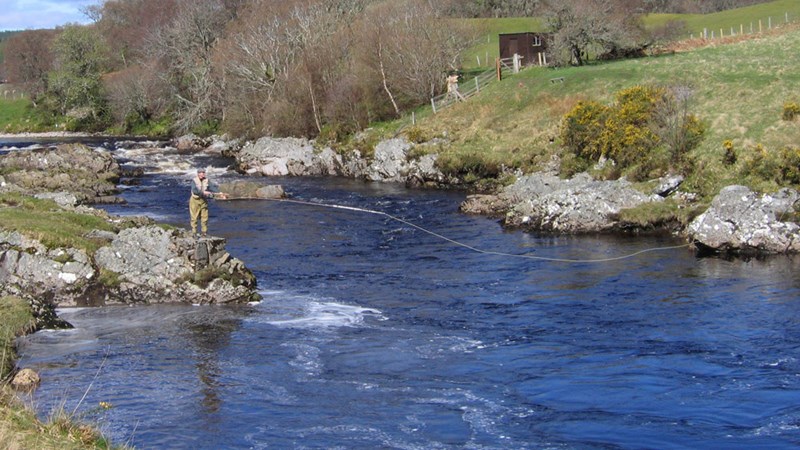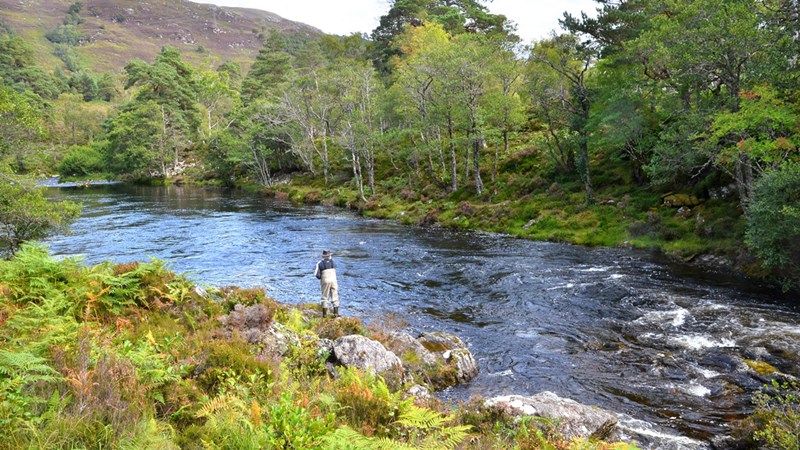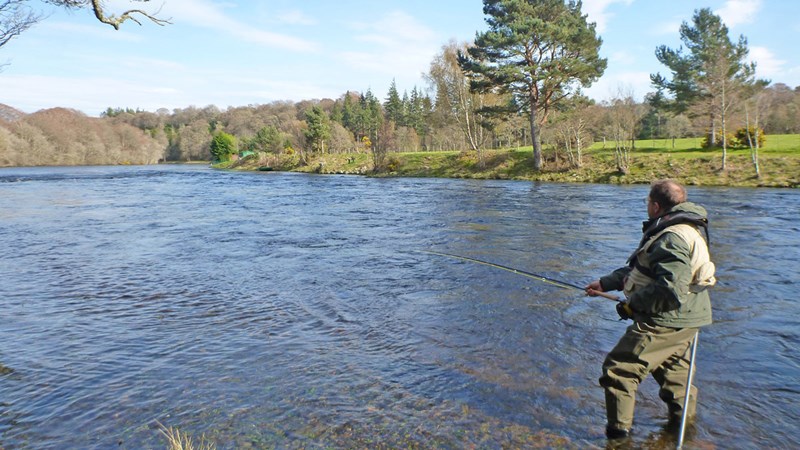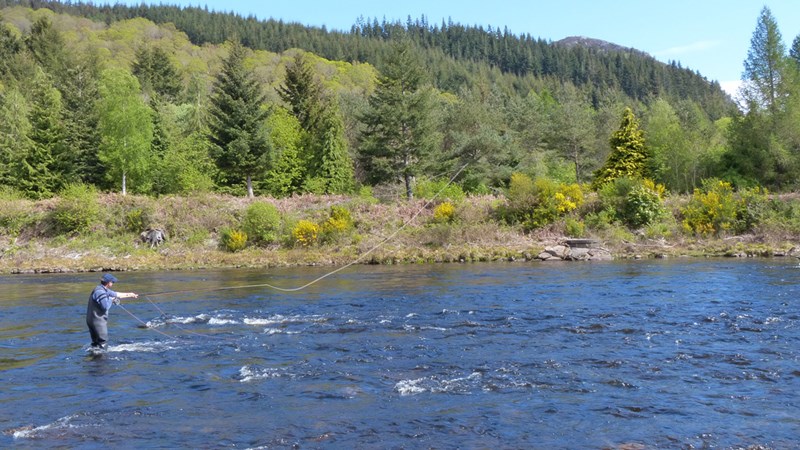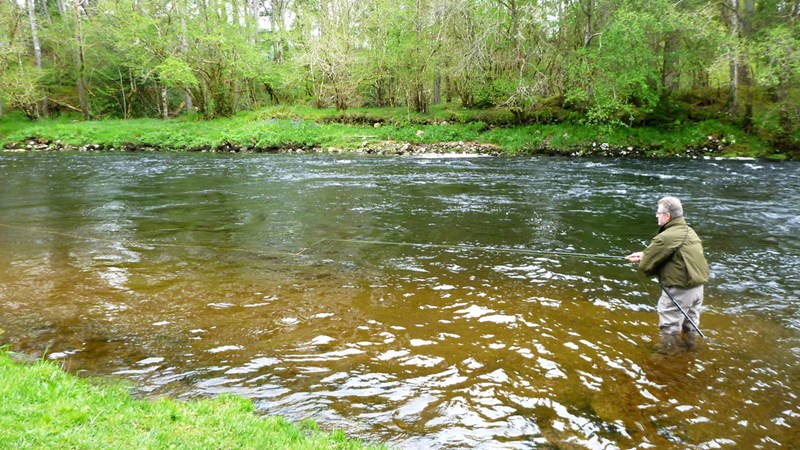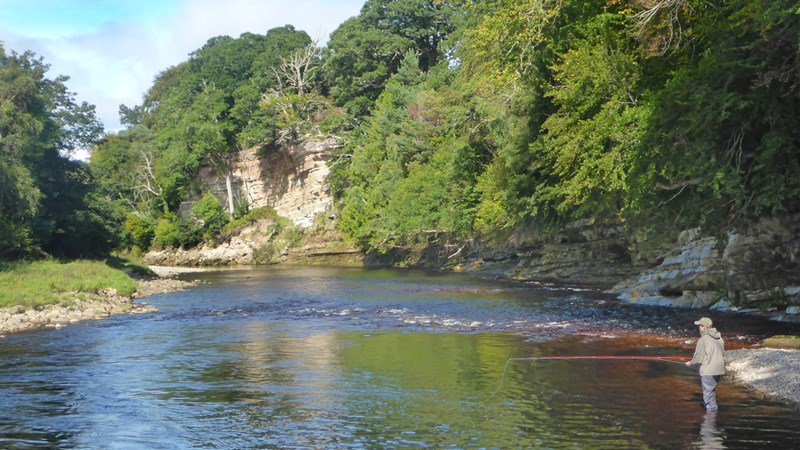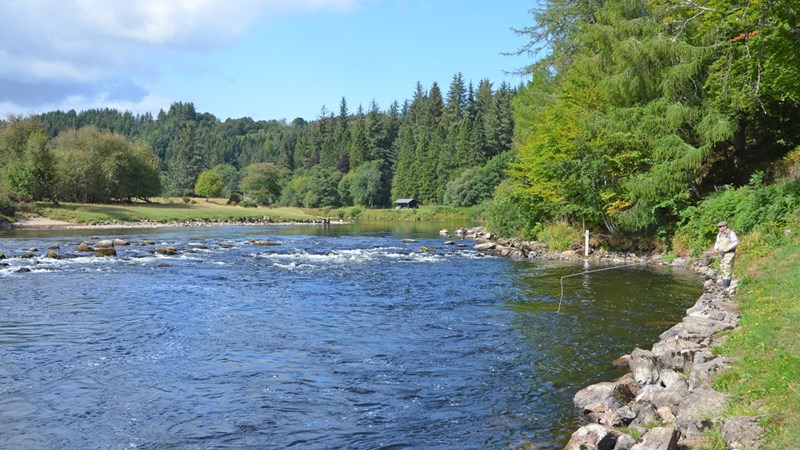North Highland Salmon Rivers
There are over a dozen famous salmon rivers draining into the Moray Firth; most reachable within an hour's drive or so from Inverness. Normal practice is that these salmon beats are let by the week, often to guests returning year after year, but we can often get single days for visiting anglers.
Here are a few of our favourites:
River Alness
The River Alness is one of the most picturesque spate salmon rivers in the Highlands, running for just 11 miles from Loch Morie to the Cromarty Firth, with a drop of 600ft. The steep descent provides for a multitude of fast flowing pools, and varied scenery throughout the beats. We have access to the Novar Estate beats, who have 6 beats spanning 6½ miles of double-banked fishing.
The Alness is a hunter’s river; ‘rivercraft’ and persistence are generally rewarded, and long casting rarely needed. It is renowned for producing ‘first salmon’.
River Conon
The River Conon is Ross-shire’s premier salmon river. Transformed by a major hydro-electric scheme in the 1950s, today the most productive salmon fishing is in the Lower Conon, running for about 8 miles from Loch Achonachie to the Cromarty Firth.
The prime beats on the Lower Conon are Brahan, Lower Fairburn, Coul and Upper Fairburn.
River Cassley
The River Cassley is one of 4 rivers draining into the Kyle of Sutherland a unique tidal estuary connected to the Dornoch Firth. The Cassley is a prolific spate river flowing south-east for approximately 15 miles Ben More Assynt to the head of Kyle of Sutherland at Rosehall.
Beats include Duchally, Glencassley, Glenrossal and the Lower Cassley fishings.
River Shin
The River Shin is another of the Kyle of Sutherland rivers. Although the Shin system is huge, the River Shin itself is a short river, flowing for just 6 miles from the dam at Loch Shin to the Kyle. Much of the outflow from Loch Shin is diverted for hydro-electric power generation, but the shin has good compensation flow throughout the season. Shin Falls about half way along its length, is a famous spot to view leaping salmon.
River Carron
The River Carron is the most southerly of the Kyle of Sutherland rivers. The Carron flows from its source near Beinn Dearg in Wester Ross in a North Easterly then Easterly direction to the Kyle at Bonar Bridge. The Carron is a fast flowing medium-sized river, typically producing around 500-800 salmon & grilse per season. Beats include Braelangwell, Gruinards, Dounie, Cornhill and Gledfield.
River Farrar
The River Farrar is one of the main tributaries of the River Beauly system, which was developed for hydro-electric power in the 1950s, with the construction of several dams and power stations. Operation of the scheme affects water levels throughout the system, including the Farrar where they are fairly constant.
The Farrar is extremely picturesque and fished for about 6 miles from the dam at Loch Beannacharan to the confluence with the River Glass.
River Ness
The River Ness is a wide salmon river running for just 7 miles from the outflow from Loch Ness to the Moray Firth. There are 3 private beats below the loch: Dochfour & Laggan, Ness Castle and Ness-side, and Inverness Angling Club control the fishing on the river below that.
This is a big river with a big fish reputation, and has played a significant part in the history of Spey casting, producing several distance world champions.
River Moriston
The River Moriston is part of the Ness system, flowing into Loch Ness at Invermoriston. The Estuary beat is only ½ mile in length and is mainly a spring salmon beat, but it produces up to 100 fish per season, many around the 20lbs mark. The beat and the fishing is heavily influenced by the hydroelectric-generation scheme, with the outflow from the turbines next to the waterfall at the top of the beat.
River Findhorn
The River Findhorn is a sizeable river with a large catchment flowing north-east from its source in the Monadhliath mountains for over 50 miles to Findhorn bay. It's joined by a tributary, the River Divie, which drains another large area to the north of Grantown-on-Spey. This large catchment ensures prolonged snow melt in spring months and regular fresh water in the system throughout the season.
River Spey
The River Spey is one of Scotland's "big 4" salmon rivers (along with the Tay, Dee and Tweed. It is the fastest-flowing and third longest river in Scotland, running for 100 miles from its source in the Monadhliath mountains to Spey Bay on the Moray Firth. The Spey is world-famous amongst anglers, both as a salmon fishery and as the home of Spey casting, developed here in the mid-1800s.
The most productive beats are generally on the middle and lower parts of the river below Grantown-on-Spey including Castle Grant, Tulchan, Ballinddalloch, Pitchroy, Knockando, Carron, Kinermony, Delagyle, Wester Elchies, Craigellachie, Arndilly, Rothes, Delfur, Orton, Gordon Brae, Gordon Castle and the association water at Fochabers.



